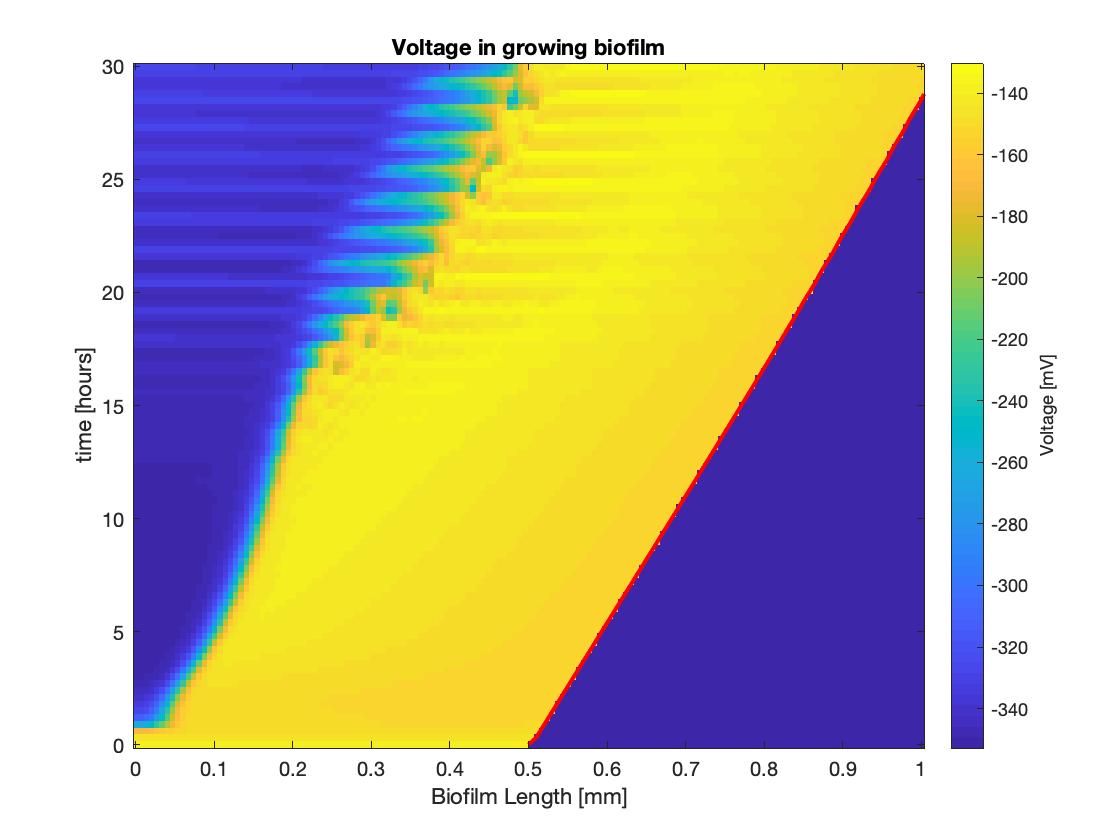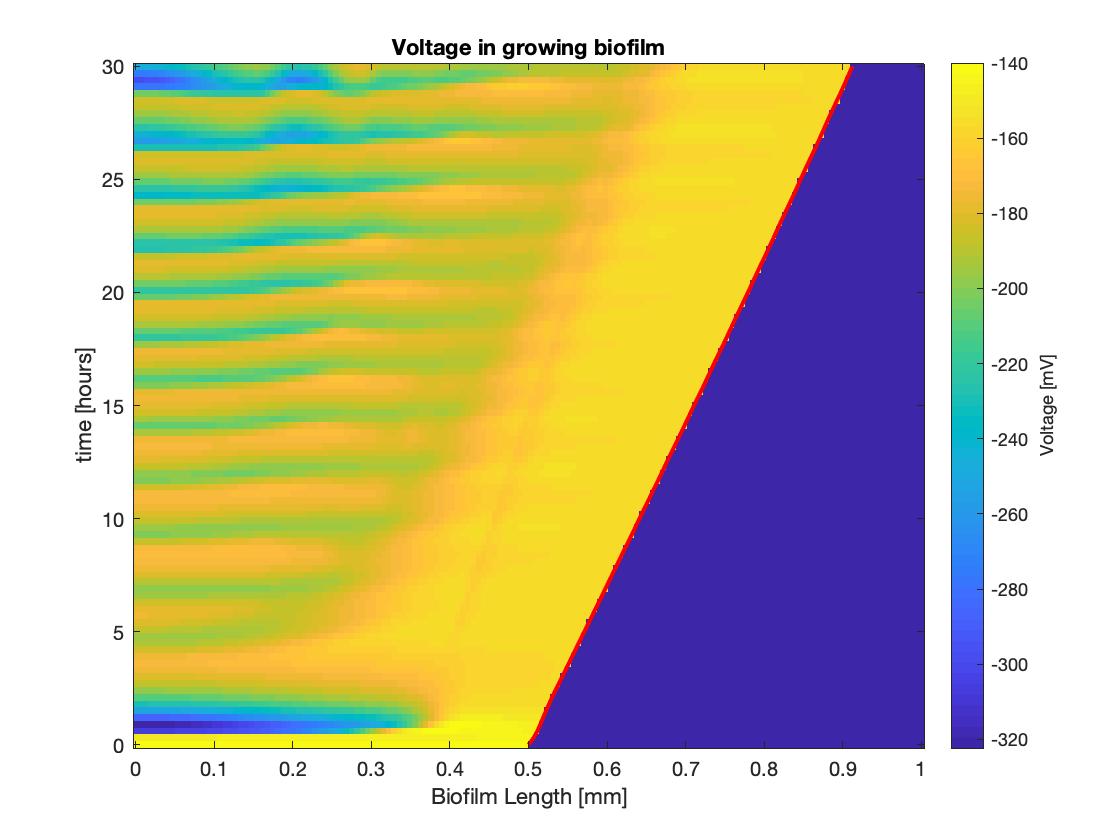Picking the Right Biofilm Model
Over the past year, I have created a couple of models of a particular biofilm system. I am currently working to write a paper that discusses which model makes the most sense given current experimental results.
There are multiple ways that a biofilm can transmit oscillations. First, it can transmit them through a potassium wave. A starving bacterium will release potassium, a positively charged ion, which neighboring bacteria will uptake causing the cell to depolarize. The depolarized cells will not be able to uptake glutamate as easily, and will then starve, causing the cells to release potassium as well. This potassium wave will spread to the rest of the biofilm.
The second way that a biofilm can transmit this wave is through glutamate depletion. A depolarized bacterium will be able to increase its intake of glutamate. By taking in more glutamate in a neighborhood that already has low glutamate, the glutamate will decrease to cause neighbors to starve as well. The glutamate will become depleted throughout the biofilm.
The following two images show growth of the biofilm over time and the voltage differences between the two models. One large difference is the speed at which the shock occurs. The potassium shock spreads faster than the glutamate depletion, and total biofilm depolarization occurs quicker. Another major difference is the glutamate model has an interior that isn’t as depolarized as the rest of the biofilm. I will need to discuss these differences with our experimental collaborator to see what he thinks better reflects experiments.
Potassium Shock Model

Glutamate Depletion Model
